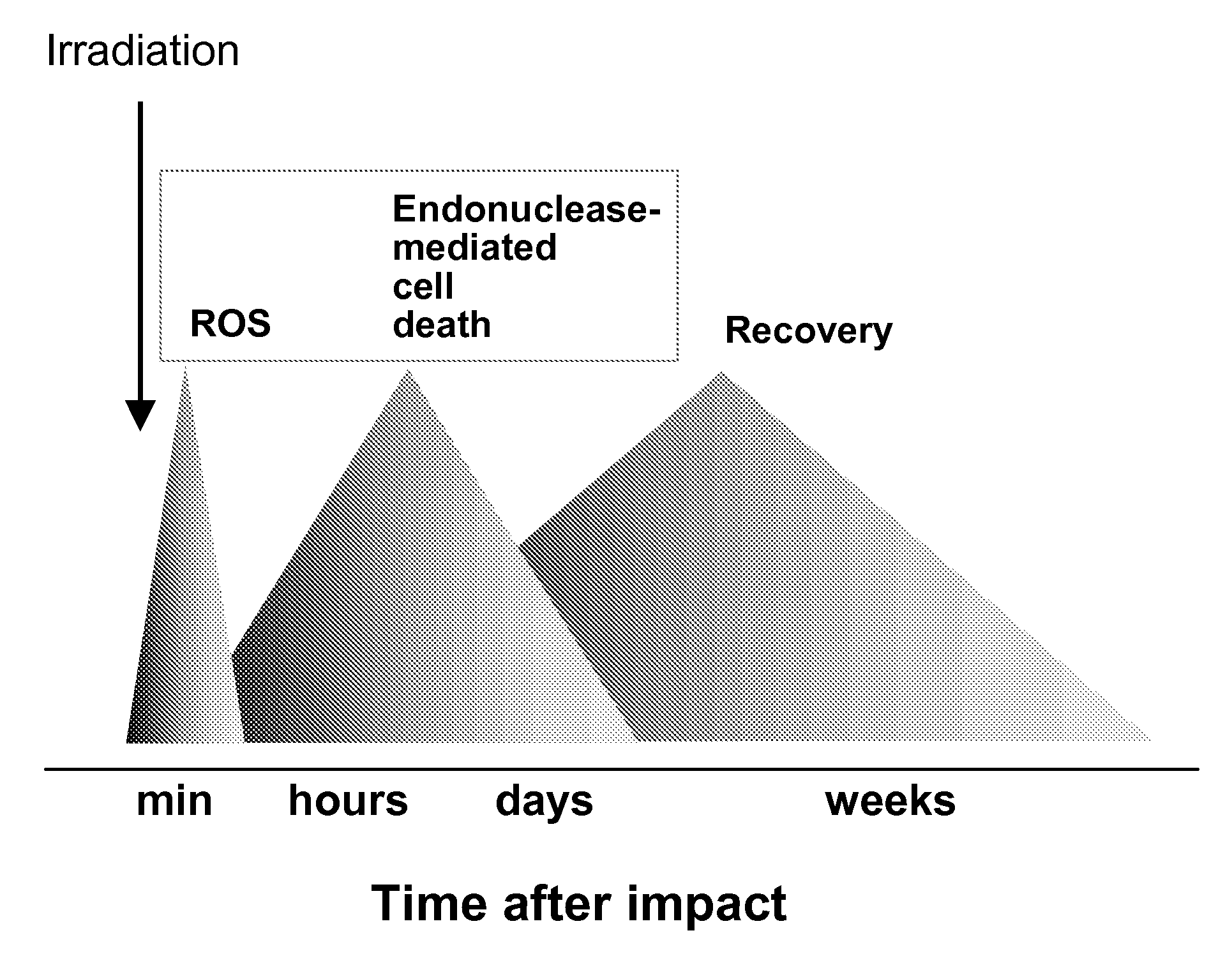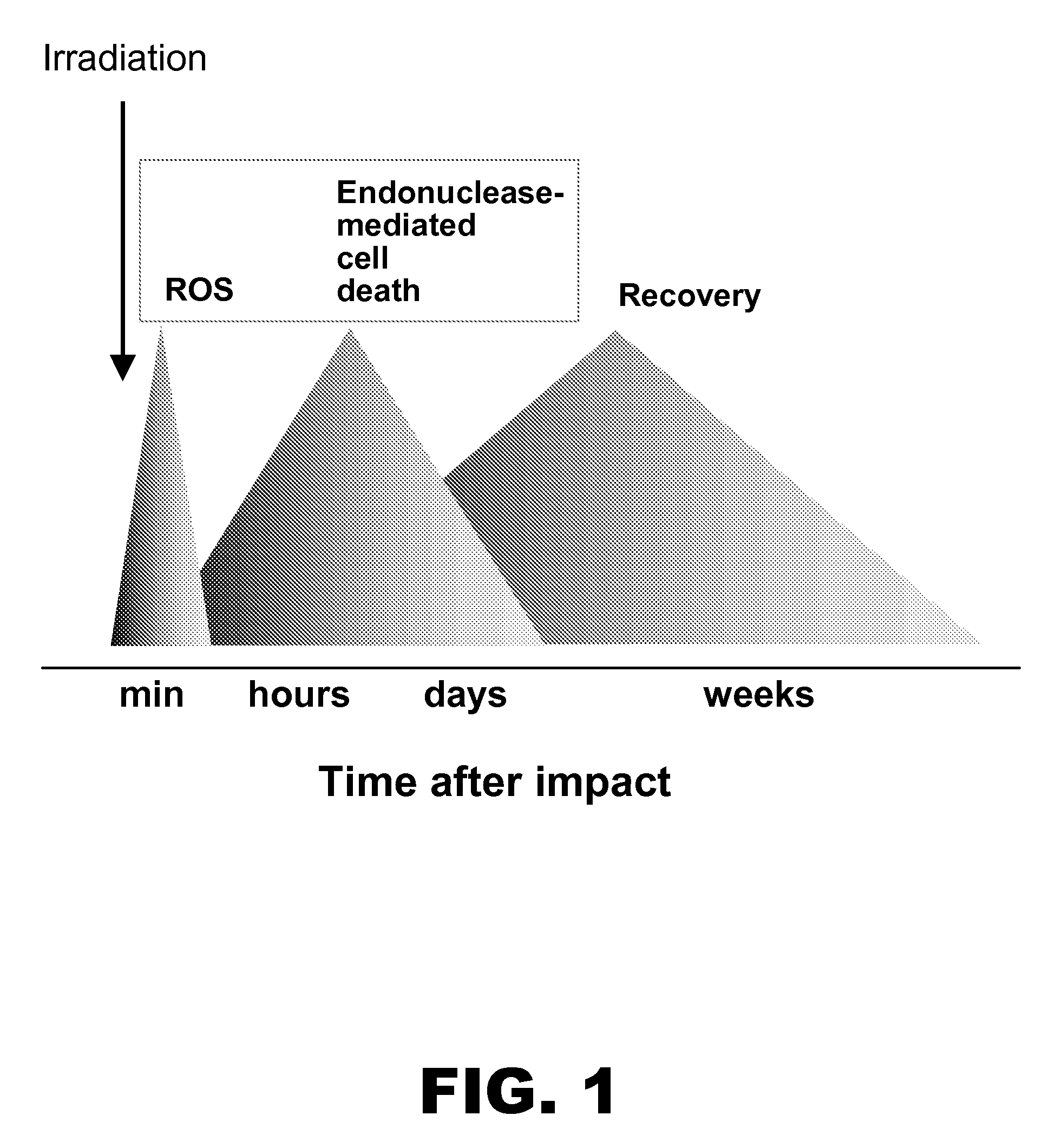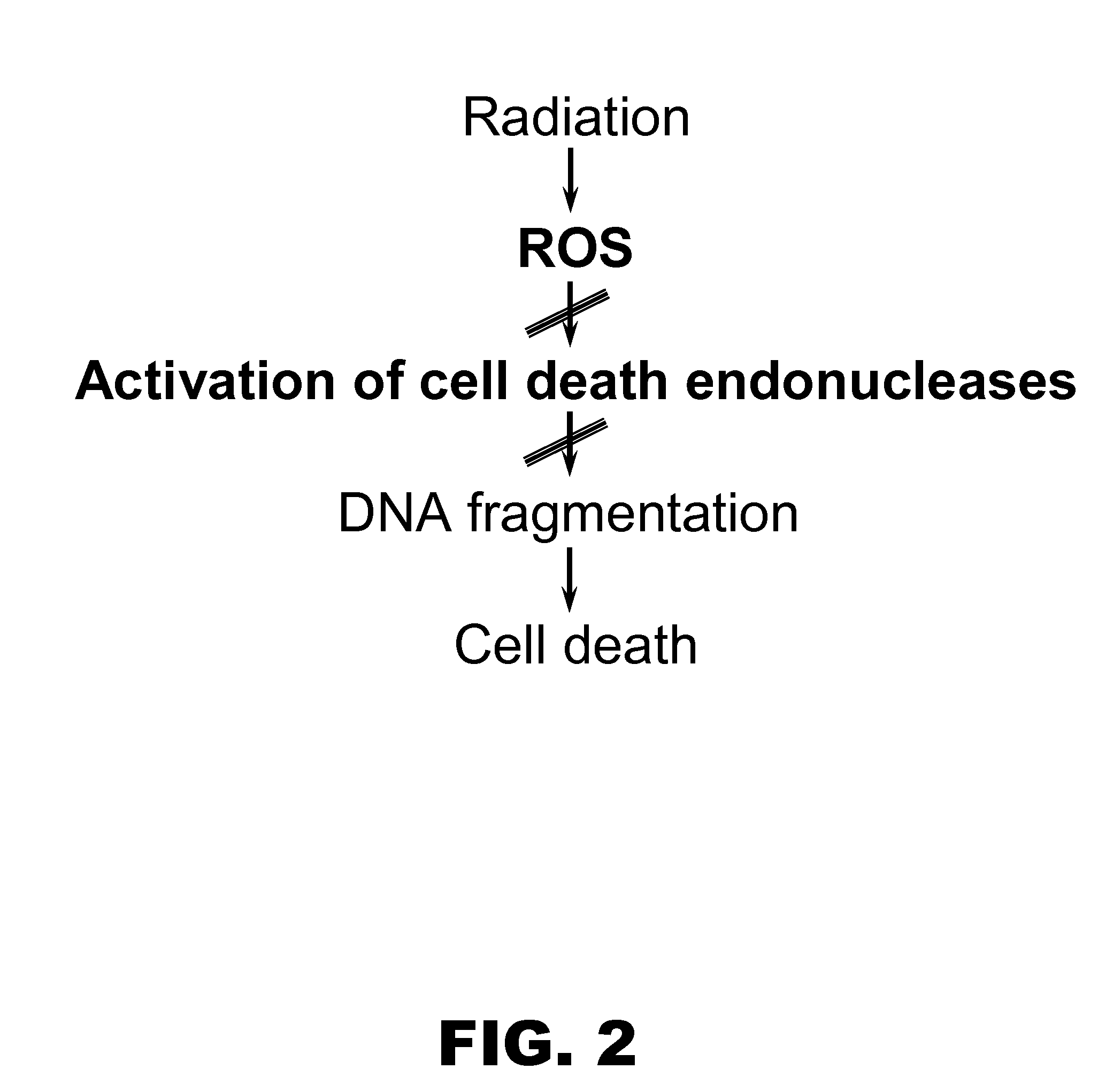Compositions and methods for cytoprotection
a cytoprotective and cell technology, applied in the field of compositions and methods for protecting cells from cellular injuries, can solve the problems of insufficient system, no pharmaceutical composition that directly targets and inhibits cell death endonucleases,
- Summary
- Abstract
- Description
- Claims
- Application Information
AI Technical Summary
Benefits of technology
Problems solved by technology
Method used
Image
Examples
example 1
Role of Endonucleases in Radiation Induced Apoptosis
[0121]Female CD-1 mice (n=4) were irradiated with an 8 Gy dose and apoptotic endonuclease-mediated DNA fragmentation was measured in different organs 40 hours after irradiation. For this, tissue sections were subjected to terminal deoxynucleotidyl transferase mediated dUTP nick end labeling (TUNEL) staining with the In Situ Cell Death Detection Kit from Roche Diagnostics (Indianapolis, Ind.). After washing and counterstaining with 4,6-diamidino-2-phenylindole (DAPI) sections were mounted under coverslips using the Antifade kit (Molecular Probes; Eugene, Oreg.) and analyzed under an Axioskop-2 mot plus microscope (Carl Zeiss, Göttingen Germany) with green filter set #31001, red filter set #11010v2 and blue filter set #31000 from Chroma Technology Corp. (Rockingham, Vt.). Images and acquisitions were performed using digital camera AxioCam MRm (Carl Zeiss) and software Axiovision 3.1 (Carl Zeiss).
[0122]Statistical comparisons of the d...
example 2
Zinc Chelates Inhibit DNase I Activity In Vitro
[0126]It was hypothesized that Zn2+-chelates of aminothiols could provide radioprotection via their direct inhibition of nucleases and their antioxidant properties (i.e., prevent nuclease induction and release). To test this hypothesis, the activity of Zn(II) chelates to inhibit nucleases was assayed in vitro. For this, DNase I and EndoG were cloned, recombinant nuclease were expressed and purified for the in vitro assay. Human and mouse mature EndoG cDNA was reverse transcribed by RT-PCR from either normal human breast epithelial HMEC cells (Clonetics, Walkersville, Md.) or immortalized mouse proximal tubule epithelial TKPTS cells (obtained from D. Elsa Bello-Reuss, University of Texas Medical Branch, Galveston). The plasmid for mature human EndoG (A49-K297) with a C-terminal histidine tag and mouse mature EndoG (A45-K294) with a C-terminal histidine tag were constructed by inserting coding cDNA into pET29b(+) (Novagen, San Diego, Cali...
example 3
Synthesis of Zn2+-Chelates
[0129]Several ligands (some of which are diagrammed in Table 2) were used to generate Zn2+-chelates (see Table 3).
TABLE 2Ligands for Zinc Chelates.
N-(2-mercaptopropionyl)glycine (MPG)
2-propylthiazolidine-4-carboxylic acid (PTCA)
2-oxothiazolidine-4-carboxylic acid (OTCA)
N-Acetylcysteine (NAC)
3,5-diisopropylsalicylic acid (DIPS)
2-(1-ribosyl)thiazolidine-4-carboxylic acid (RibCys)
Thiazolidine-4-carboxylic acid (TCA)
TABLE 3Compounds Tested for Radiosensitivity.Ligand (chelator)Zn2+-chelateAmifostine——Zn-chloride3,5-Diisoproylsalicylic acid (DIPS)Zn-DIPSGluconic acidZn-GluconateGlycineZn-GlycinateCysteine (Cys)Zn-CysN-Acetylcysteine (NAC)Zn-NACCysteamine (CYST)Zn-CystN-(2-Mercaptopropionyl)glycine (MPG)Zn-MPGThiazolidine-4-carboxylic acid (TCA)Zn-TCAPenicillamineZn-PenicillamineCaptoprilZn-Captopril2-(1-Ribosyl)thiazolidine-4-carboxylic acidZn-RybCys(RybCys)2-propylthiazolidine-4-carboxylic acidZn-PTCA(PTC...
PUM
| Property | Measurement | Unit |
|---|---|---|
| weight fraction | aaaaa | aaaaa |
| weight fraction | aaaaa | aaaaa |
| weight fraction | aaaaa | aaaaa |
Abstract
Description
Claims
Application Information
 Login to View More
Login to View More - R&D
- Intellectual Property
- Life Sciences
- Materials
- Tech Scout
- Unparalleled Data Quality
- Higher Quality Content
- 60% Fewer Hallucinations
Browse by: Latest US Patents, China's latest patents, Technical Efficacy Thesaurus, Application Domain, Technology Topic, Popular Technical Reports.
© 2025 PatSnap. All rights reserved.Legal|Privacy policy|Modern Slavery Act Transparency Statement|Sitemap|About US| Contact US: help@patsnap.com



